Full-motion video (FMV) is a video game narration technique that relies upon pre-recorded video files to display action in the game. While many games feature FMVs as a way to present information during cutscenes, games that are primarily presented through FMVs are referred to as full-motion video games or interactive movies.
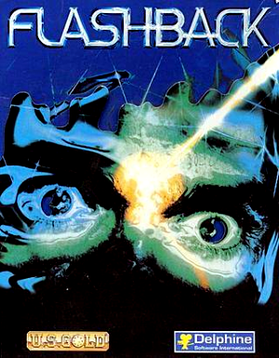
Flashback, released as Flashback: The Quest for Identity in the United States, is a 1992 science fiction cinematic platform game developed by Delphine Software of France and published by U.S. Gold in the United States and Europe, and Sunsoft in Japan.

Hell: A Cyberpunk Thriller is a point-and-click adventure game released in 1994, developed by Take-Two Interactive Software and published by GameTek for the DOS. It was ported to 3DO, Macintosh and Microsoft Windows. The game was notable for being one of the first CD-ROM-only games to use speech with hi-res graphics, and was designed by the same team as BloodNet, the story of which is referenced to during one of Hell's subplots. Dennis Hopper, Grace Jones, Stephanie Seymour, and Geoffrey Holder are among the actors in the game. Seymour and Holder appear in live action footage, while the rest of the cast, including Hopper and Jones, lend their voices to computer-animated representations.

Alone in the Dark 2 is a 1993 survival horror video game developed and published by Infogrames. It is the second installment in the Alone in the Dark series. It was ported to the PC-98 and FM Towns in 1994 and to the 3DO Interactive Multiplayer in 1995 under the same name, and to the Sega Saturn and PlayStation in 1996 as Alone in the Dark: Jack Is Back in Europe, and renamed as Alone in the Dark: One-Eyed Jack's Revenge in North America.
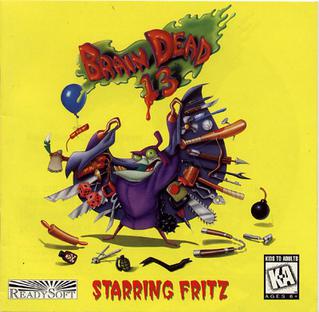
Brain Dead 13 is an interactive movie video game developed and originally published in North America by ReadySoft on 15 December 1995 and in Europe by Empire Interactive on the same year for MS-DOS. Unlike Dragon's Lair and Space Ace, which began as laserdisc arcade games, it was only released for personal computers and video game consoles. In the game, players assume the role of young computer expert Lance Galahad to defeat Dr. Nero Neurosis at his castle and its residents. Its gameplay is primarily presented through the use of full-motion video (FMV).

Star Wars: Rebel Assault is a rail shooter video game developed and published by LucasArts for DOS, Macintosh, Sega CD and 3DO Interactive Multiplayer systems, set in the Star Wars universe. Released in 1993, it is the first CD-ROM-only game to be published by LucasArts. The game's story focuses on a young pilot called Rookie One as they are trained by, and subsequently fights for, the Rebel Alliance in the Galactic Civil War.
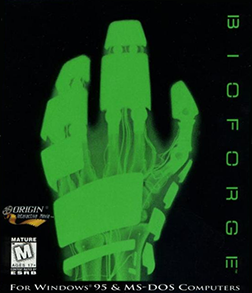
BioForge is a 1995 action-adventure game developed by Origin Systems and published by Electronic Arts for MS-DOS. Set in the future, the player controls an amnesiac cyborg trying to escape the research facility in which they are being held prisoner.
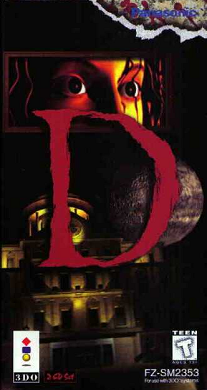
D is a horror-themed interactive movie and adventure game developed by Warp and directed by Kenji Eno. It was first published by Panasonic for the 3DO Interactive Multiplayer in 1995, later being ported to the Sega Saturn, PlayStation, and MS-DOS. The story follows Laura Harris as she goes to investigate a hospital after learning her father went on a mass murdering spree and barricaded himself inside. The hospital morphs into a castle upon her arrival, which she must explore to find her father. The player controls Laura through computer generated full-motion video (FMV) sequences, and must complete the game within two hours without a save or pause function.
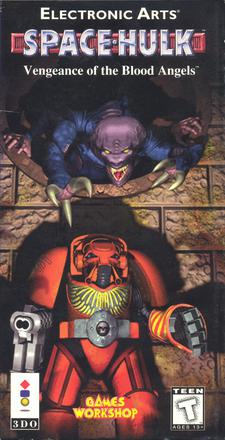
Space Hulk: Vengeance of the Blood Angels is a video game published by Electronic Arts in 1995 for the 3DO, which was later ported to PlayStation, Sega Saturn, and Microsoft Windows. It is based on Games Workshop's board game Space Hulk and is the sequel to the 1993 video game Space Hulk. Like its predecessor, Vengeance of the Blood Angels combines first-person shooter gameplay with real-time tactical elements. Space Hulk: Vengeance of the Blood Angels is part of the Warhammer 40,000 universe.
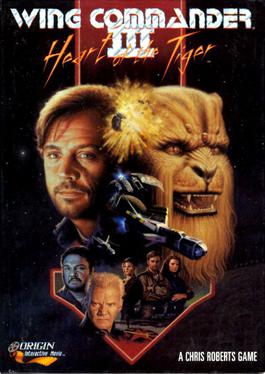
Wing Commander III: Heart of the Tiger is the third main game in Chris Roberts' Wing Commander science fiction space combat simulation video game series, developed and released by Origin Systems in December 1994. It was a departure from previous games in the series in that it uses extensive live action full-motion video to add an interactive movie-style presentation to the space combat gameplay, emphasized by its advertising slogan, "Don't watch the game, play the movie!". The game's more than two hours of video featured a number of prominent movie stars including Mark Hamill as Colonel Christopher "Maverick" Blair, Malcolm McDowell as Admiral Tolwyn, John Rhys-Davies as James "Paladin" Taggart and Thrakhath nar Kiranka, and Tom Wilson as Todd "Maniac" Marshall.
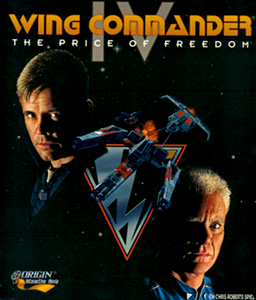
Wing Commander IV: The Price of Freedom is the fourth main game in the Wing Commander science fiction space combat simulator video game series, produced by Origin Systems and released by Electronic Arts for the PC in 1996 and the Sony PlayStation in 1997.
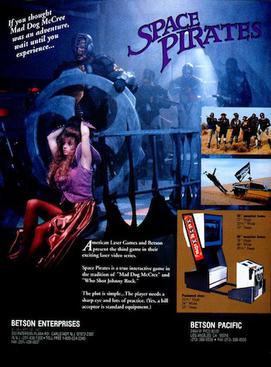
Space Pirates is a live-action LaserDisc video game, released by American Laser Games for the arcade in 1992 and ported to MS-DOS computers in 1994 and the 3DO Interactive Multiplayer in 1995. The game was re-released for several platforms by Digital Leisure around 2003, with updated sound and video, among other American Laser Games titles.

Creature Shock is a 1994 sci-fi first-person crawler game released for MS-DOS and 3DO. It was developed by Argonaut Software and published by Virgin Interactive Entertainment. The game was later ported to the CD-i, Sega Saturn and PlayStation video game systems.

Defcon 5 is an action-adventure video game developed by Millennium Interactive. It was released for MS-DOS in 1995, and ported to PlayStation, Sega Saturn and 3DO Interactive Multiplayer in 1996. The name refers to the condition used to designate normal peacetime military readiness under the DEFCON system, but which is commonly misused in popular fiction to indicate a state of emergency. The game was originally announced under the title Incoming.
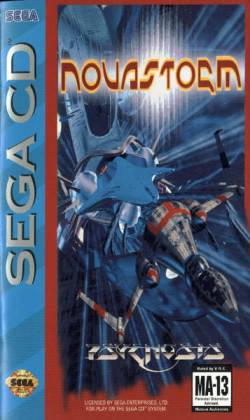
Novastorm is a rail shooter video game developed and published by Psygnosis in 1994. A version for the FM-Towns/Marty systems had previously been released under the name Scavenger 4.

Shockwave Assault is a science fiction combat flight simulation video game developed by Advanced Technology Group and published by Electronic Arts for various home video game consoles and PCs. The player takes control of a futuristic fighter plane to defeat extraterrestrial ships and tripods.

Burning Soldier is a 1994 rail shooter video game developed by Genki and originally published by Panasonic and Pack-In-Video in North America, Japan and Europe exclusively for the 3DO Interactive Multiplayer. The first title created by Genki for the 3DO platform, the game is set in a futuristic Solar System in 2095 where a war against humanity erupts with the arrival of the Kaisertian alien race, as players assume the role of an Earth Defense Force fighter pilot taking control of the mecha-style Strike space fighter craft in an effort to overthrow the invaders and end the conflict. Its gameplay mainly consists of shooting mixed alongside full motion video with sprite-based enemies imposed on them using a main two-button configuration.
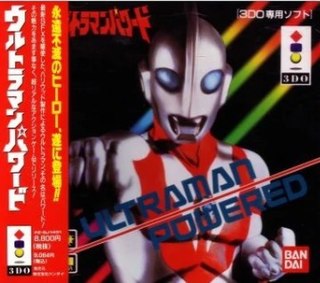
Ultraman Powered is a fighting game developed by Tose and published by Bandai for the 3DO Interactive Multiplayer. The player takes on the role of the extraterrestrial superhero Ultraman Powered, tasked with protecting the Earth from destructive aliens and monsters. Gameplay primarily consists of one-on-one battles where the player must deplete an adversary's health meter using both basic and special fighting techniques. The game also contains 3D rail shooter sections and a two-player versus option.

Alien Odyssey is an action-adventure game developed by Argonaut Software and published by Philips Media in 1995. The game features a mixture of first-person and third-person gameplay, with sequences involving shooter, adventure and puzzle mechanics. Alien Odyssey makes use of 3D rendering and full motion video cutscenes which were developed using the developer's proprietary B-Render graphics software. Upon release, the game received a mixed reception, with reviewers praising the visual presentation of the game, whilst critiquing the game's inconsistent mixture of game modes and short length.

Gridders is a 1994 puzzle video game developed by Tetragon and published by The 3DO Company for the 3DO Interactive Multiplayer. It was also included as a pack-in game for the 3DO Blaster, an add-on produced and designed by Creative Labs to allow Microsoft Windows to play 3DO games. The game follows Zack, a worker for the Gridder Corporation run by Lazarus R. Trench, and his dog companion Fidex entering the factory in order to reach a mysterious secret within its basement. The player acts as Zack and must explore 36 floors, navigating squares and collecting pyramid keys by solving puzzles, while avoiding Gridder blocks and obstacles.



















